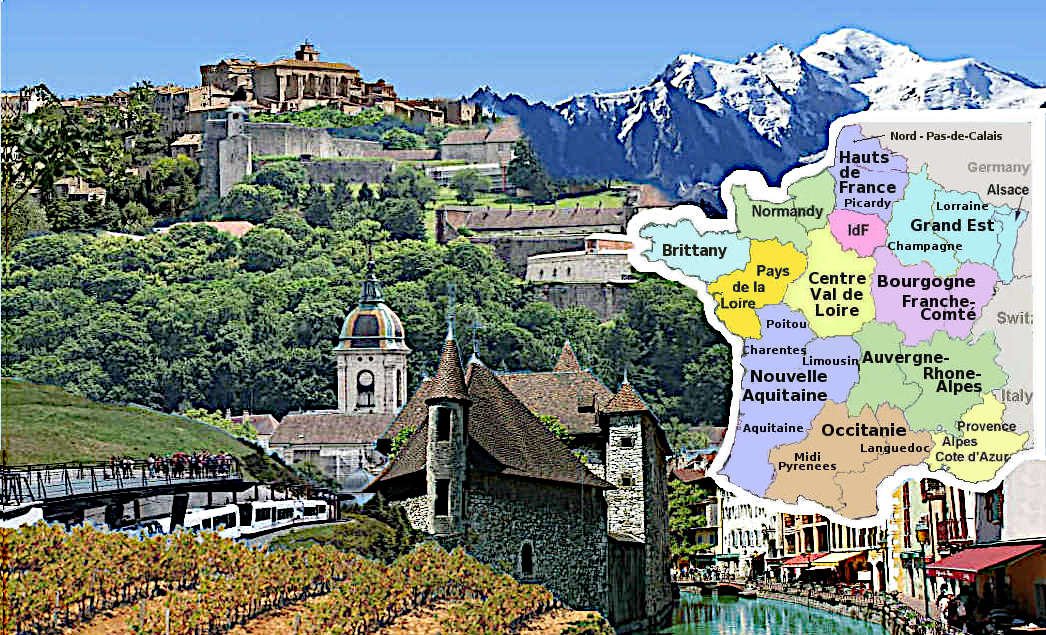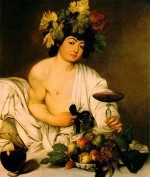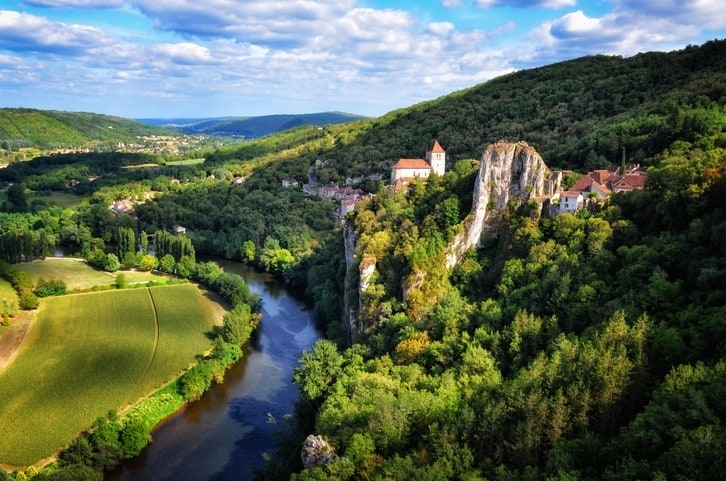
Wines of Southwest France (in French Sud-Ouest) won the 2017 Wine Region of the Year by the Wine Enthusiast Magazine. South West France with its vast territory and diverse soil types grows approximately 300 grape varieties, of which 120 are native, making the region one of great biodiversity. This is a great Vino con Vista destination. You can visit a wide range of UNESCO sites near this region of France:
- Historic Fortified City of Carcassonne (1997)
- Canal du Midi (1996)
- Episcopal City of Albi (2010)
.The Southwest can be divided into three distinct regions:
- Wines of the East (including Fronton, Gaillac and Marcillac): The wines are generally more fruity and spicy than others in the Southwest.
- Wines from the central zone (including Bergerac, Duras, Cotes de Gascogne, Montbazillac, Montravel): These wines are grown on clay and limestone soils, with grape varieties heavily influenced by Bordeaux.
- Wines of the West (including Madiran, Jurançon and Irouléguy, as well as Béarn, Tursan and St. Mont): These appellations see the Pyrénées and are influenced by its mountain climate.
APPELLATIONS Of Southwest France:
The Romans brought viticulture to this area around the 1st century AD and they exported wine all over their empire. Earthenware, like wine vessels called amphora from the region have been found as far away as Scotland. By the first century BC, the Romans were distributing wine, as well as other commodities, throughout the Mediterranean in amphorae. During the Middle Ages, this region, also known as Gascogne or Gascony. It was part of Aquitania and ruled by the English for over 300 years.

In pre-Roman times, inhabitants of Gascony were Aquitanians (Latin: Aquitani), who spoke a non-Indo-European language related to modern Basque. In the 50s BC, Aquitania was conquered by lieutenants of Julius Caesar and became part of The Roman Empire. The main rivers that flow through Gascony are the Dordogne, Garonde and the Tarn and were used to ship the wines from the South West to the larger port of Bordeaux where the barrels would be sent on to England, Holland, Germany and Russia. Still in the shadow of their northern neighbor Bordeaux, the region is working hard to reestablish their global reputation.
Now its part of “Occitanie” – a historical reference to the part of France where until the nineteenth century most people spoke varieties of Occitanian French, not the standard French of northern France.
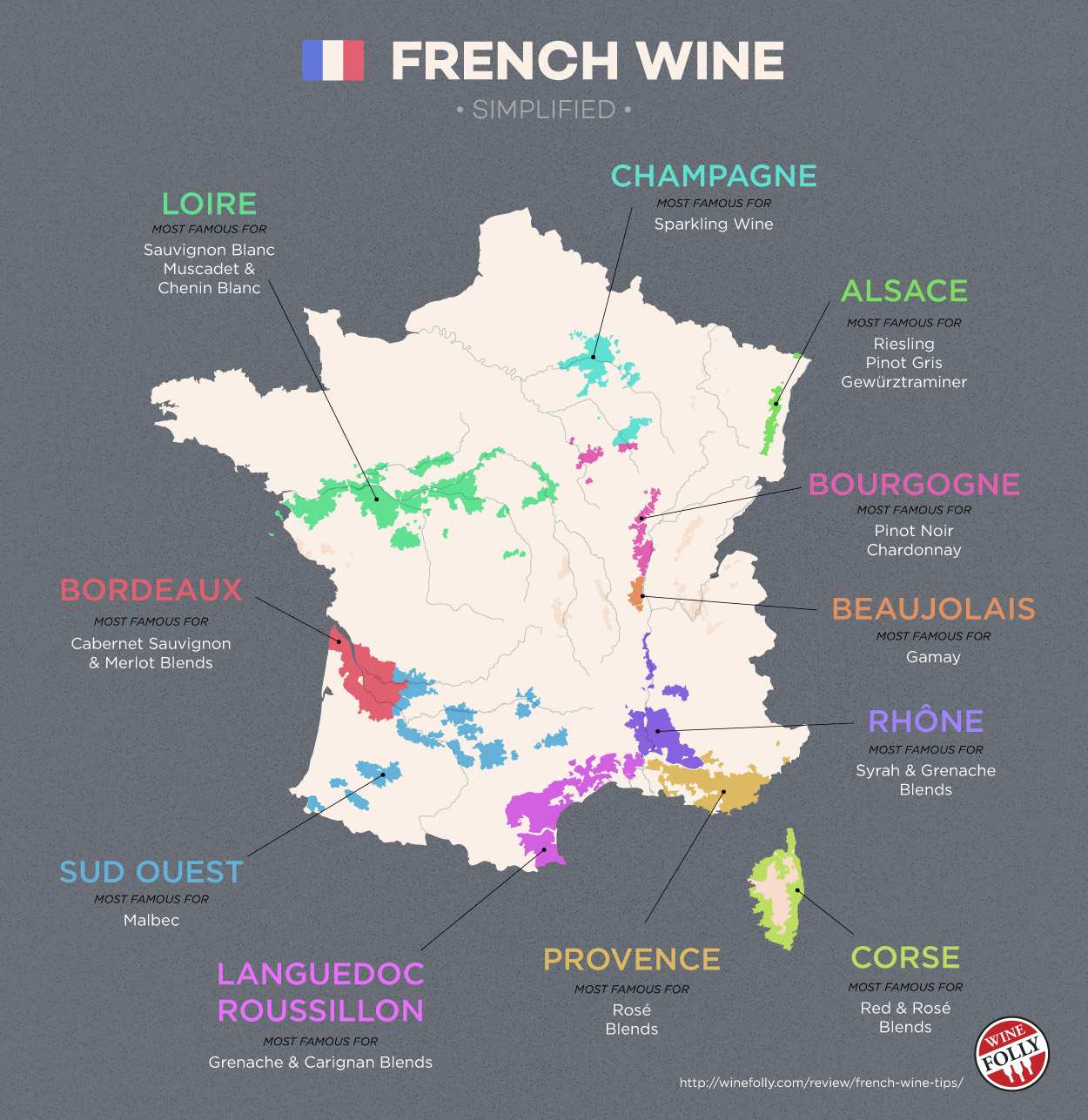
“They have received global praise over the last few years for its wines of superior value and finesse, yet highly affordable and easy to pair. With its exceptional array of 120 native grape varieties and inspiring bouquet of aromas, Southwest France is fast becoming an interesting region for both sommeliers and consumers who are looking for high-quality wines that won’t break the bank.”

This outstanding distinction is given each year as part of the Wine Star Awards to the “region that has made an exemplary contribution to the wine industry by adopting an innovative vision and committing to sustainable excellence.”
There are plenty of UNESCO World Heritage Sites and Tourist Attractions in Southwestern France to explore in the Southwest region of France as you Tour and Taste your way through the vineyards. Here they are:
Decorated Cave of Pont d’Arc, known as Grotte Chauvet-Pont d’Arc, Ardèche/UNESCO
The Causses and the Cévennes, Mediterranean agro-pastoral Cultural Landscape?UNESCO
Episcopal City of Albi/UNESCO
Pyrénées – Mont Perdu */UNESCO
Historic Fortified City of Carcassonne/UNESCO
Canal du Midi/UNESCO
Abbey Church of Saint-Savin sur Gartempe/UNESCO
Prehistoric Sites and Decorated Caves of the Vézère Valley/UNESCO
Here’s a wine map of South West France:

The southwestern portion of France, a lush and hilly region with a temperate oceanic climate. The lush rolling hills of this exceptional area stretch from the Atlantic Ocean to Toulouse and from the Pyrenees to the vast mountains of the Massif Central. In general, the region is in the southwest corner of France, although it excludes their high-profile neighbors, Bordeaux and Cognac.

The region is bordered by the Atlantic Ocean on the west and Spain and the Pyrenees Mountains on the south. The Southwest is France’s fourth largest region in production volume; with 47,000 hectares of land and 42 geographical designations. It has an exceptional array of 120 native grape varieties with an inspiring bouquet of aromas.

Understanding The Southwest Wine Region of France
Southwest France is composed of 29 different Appellation d’origine Protégées (AOP) and 13 Indication Géographique Protégées (PGI), each with rules regarding allowed grape varieties and farming practices.

The South West is divided into four ‘sub-regions’, each with its own distinctive character, climate, and grapes:
- Bergerac & Dordogne River: Located just south of Bordeaux
- Garonne & Tarn: Named after two major rivers, this region reaches a little further east, towards France’s fourth largest city, Toulouse. The climate is somewhat varied; the western portion is more influenced by the Atlantic while the Mediterranean climate holds more sway in the eastern environs with less rain and slightly higher temperatures. Tarn-et-Garonne is a department Southwestern France. It is traversed by the rivers Tarn and Garonne, from which it takes its name.
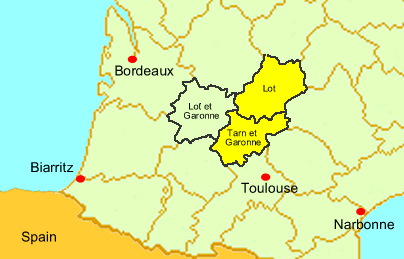
- Lot River: The Lot River Region is influenced by both the Atlantic and the Mediterranean climates and grows the same grape varieties as the Garonne & Tarn. “Cahors” is the most famous of the sub-regions and home to this popular Malbec.
- Pyrénées: Named after the rugged mountain range that divides France and Spain, the wines from the Pyrénées sub-region are rustic and artisanal, crafted from the indigenous Tannat grape variety.
The Southwest Region can generally be thought of in two groups: the wines of the Dordogne, which are often produced from the same grapes and in the same styles of Bordeaux, and the wines of the remainder of the South West regions that make wines vastly different from Bordeaux wines.
The Dordogne is at the heart of some of the finest vineyards in the world: Bordeaux, St Emilion, Monbazillac, Bergerac, and Cahors.

The Bergerac and the Dordogne River produce Cabernet Sauvignon, Merlot and Bordeaux blends. Located just south of Bordeaux, the vineyards of the 80 communes of this region lie along the Dordogne River; the same river that flows through world famous Bordeaux. They share the same Atlantic climatic influence, although temperatures are slightly warmer here. They also use similar grape varieties to make dry reds, whites and rosés, as well as sweet dessert styles.
Dordogne/Bergerac, subregions:
- Bergerac AOC
- Côtes de Duras AOC
- Côtes de Montravel AOC
- Haut-Montravel AOC
- Monbazillac AOC
- Montravel AOC
- Pécharmant AOC
- Rosette AOC
- Saussignac AOC
Look for regional names on the label like Bergerac, Montravel (dry white blends), Pécharment (big, reds), and sweet wines from Saussignac, Rosette and Monbazillac.
:max_bytes(150000):strip_icc()/dordogne_map-56a3a1c03df78cf7727e50ca.gif)
In Dordogne, the chatming town of Sarlat-la-Canéda is the perfect base for exploring the grandiose hilltop châteaux that look down on the Dordogne river and the UNESCO-listed prehistoric sites along the Vézère valley.
https://www.northofthedordogne.com/dordogne-attractions.php

Its narrow streets are brimming with lavish sandstone mansions, perfectly preserved since the middle ages and Renaissance.
Visit the town of Sarlat


Vue Du Ciel
The elevator was built in the bell tower and has walls made of glass and offers visitors a 360 degree view of the city of Sarlat.
Don’t miss taking a ride up the 14th-century bell tower, where renowned architect Jean Nouvel has designed a panoramic glass elevator offering 360-degree views (Vue Du Ciel). One of France’s top architects, Jean Nouvel, was born in Sarlat. The Pritzker Architecture Prize winner in 2008 recently restored the church of Sainte-Marie in the center of Sarlat. Mixing contemporary elements with the 14th century architecture of the church, the interior has now been converted into an elegant covered market.
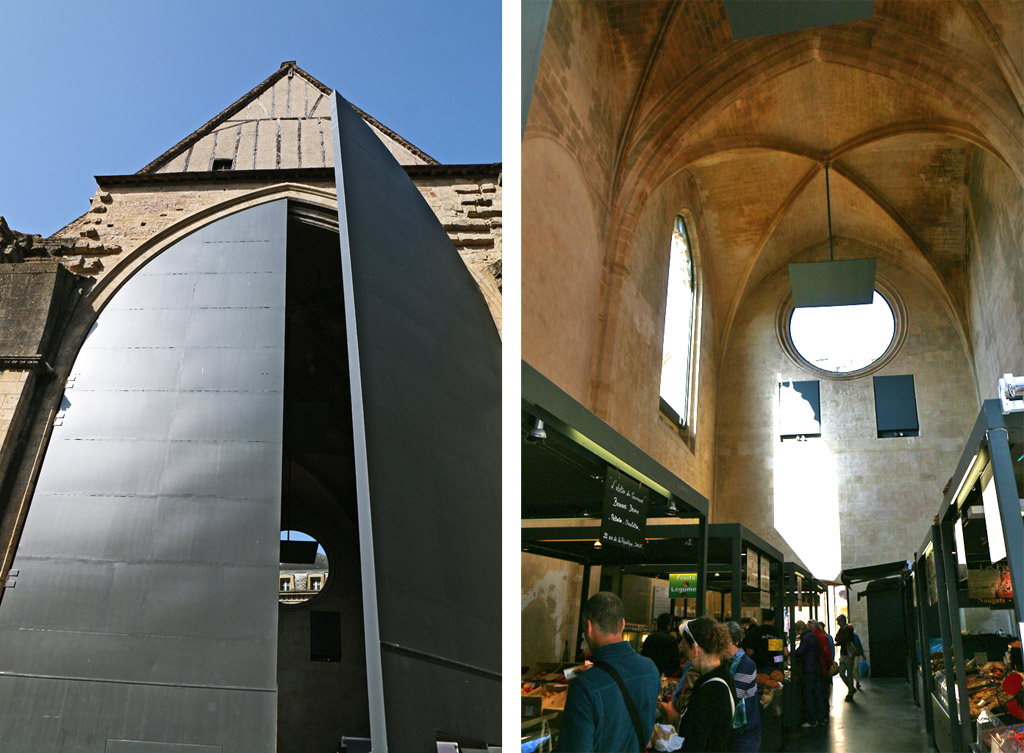

This church dates back to the 14th–century and was turned into a post office in 1905. Finally when it was abandoned, the municipality got architect Jean Nouvel to renovate the building.

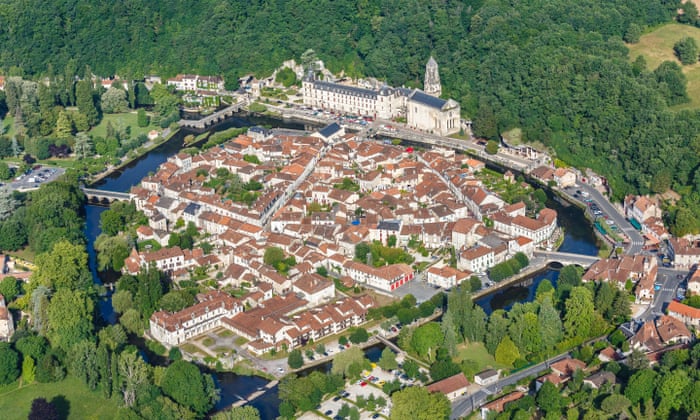
Inside each of these are an array of communal and village appellations or AOP (Appellation d’Origine Protégée). These appellations must adhere to strict regulations regarding the growing of grapes and wine production.
There are also some larger areas with less restrictive vineyard and wine-making regulations referred to as IGPs (Indications Géographique Protégé or Protected Geographical Indication).
Madiran is home to the Tannat grape, while Jurançon is the home of Petit Manseng.
Here are some options among the region’s 29 AOPs or Appellations d’Origine Protégée available in the U.S.:
- white wines including Côtes-de-Gascogne and Irouléguy and Tursan
- Aromatic rosés that know no season including Fronton
- Fruity reds that literally pair with everything including: Gaillac, Côtes du Marmandais, Saint-Mont and Marcillac
- Full-bodied reds including: Brulhois, Madiran, Cahors, Bergerac, Côtes-de-Duras and Coteaux du Quercy
- A delicious ending with sweet wines including Monbazillac and Pacherenc du Vic-Bilh
The following grape varieties are commonly found in at least one sub-region or appellation of South West France.
- Abouriou
- Arrouya noir
- Arrufiac
- Baco blanc
- Bouchalès
- Cabernet Franc
- Cabernet Sauvignon
- Clairette blanche
- Colombard
- Courbu
- Duras
- Fer
- Folle blanche
- Gros Manseng
- Jurançon
- Len de l’El
- Malbec
- Merlot
- Muscadelle
- Négrette
- Petit Manseng
- Portugias bleu
- Raffiat de Moncade
- Sauvignon blanc
- Sémillon
- Tannat

- Valentré bridge in Cahors
The Lot River Region is influenced by both the Atlantic and the Mediterranean climates and grows the same grape varieties as the Garonne & Tarn. “Cahors” is the most famous of the sub-regions. Wine from the Cahors appellation must be made from at least 70% Malbec grapes, with a maximum of 30% Merlot or Tannat grape varieties.
Cahors uses the marketing slogan: “the French Malbec”. Malbec has become the emblematic grape from Mendoza in Argentina but its origin is actually Cahors in south-western France.
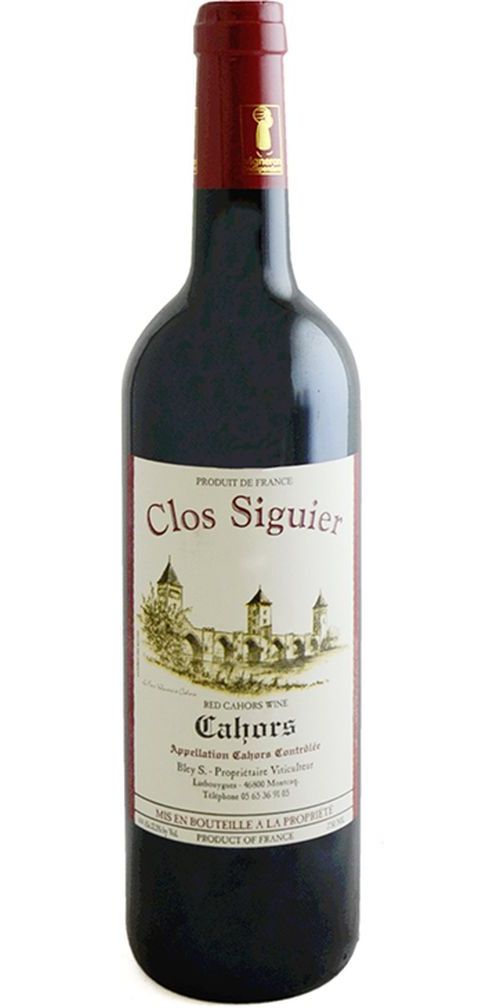
REPRESENTATIVE PRODUCERS SELLING IN THE U.S.
- Château Barréjat / SARL Denis Capmartin – Château Barréjat is situated in the district of Maumusson, in the heart of the appellation Madiran. City: 32400 Maumusson–Laguian, Southwest France (1¼ hour by car from Bordeaux, ½ hour from the Pau airport)
- Château de Millet – Eauze, France
- Château du Cèdre – SARL Le Cèdre Diffusion – Bru, France
- Domaine Chiroulet – Condom, Gers, France
- Domaine d’Espérance – Mauvezin d ‘Armagnac, France (in the rolling hills of Gascony, 90 minutes south of Bordeaux)
- Domaine de Laballe – Famille Laudet – Parleboscq, France (vineyard); Capbreton, France (tasting rooms)
- Domaine de l’Herré – Manciet, France
- Domaine de Ménard – SARL de Ménard – Gondrin, France
- Domaine du Tariquet – Eauze, France
- Domaine San de Guilhem – Ramouzens, France
- Domaine Uby – Cazaubon, France
- Georges Vigouroux – Cahors, France
- Vignobles Estrade et Fils – Domaine de Laxe – Fources, France
- Plaimont Producteurs – Saint Mont, France
- Domaine d’Arton – Lectoure, France (1 from Toulouse, 1.5 hours from Bordeaux)
- Domaine de Mirail – Lectoure, France
- Domaine de Pellehaut – SCV Beraut – Montréal-du-Gers, Ténarèze region, France
- Domaine de Joÿ – Panjas, France (Gers Department)
- Domaine de Laguille – Eauze, France
- Villa Dria – Eauze, France
- Domaine Saint-Lannes – Lagraulet-du-Gers, France
- Domaine du Rey – Gonrin, France
TOURISM in South West France
Several churches and basilicas in Lourdes located close to the French/Spanish border in Lourdes near the village of Tarbes, are associated with Marian apparitions and receives over 5 million pilgrims a year. The Sanctuary and Grotto of Our Lady of Lourdes is the second most visited Christian pilgrimage site in Europe after Rome.


In 1858, the Virgin Mary appeared to a local girl named Bernadette Soubrious. Eventually, she left Lourdes and joined the Sisters of Charity at the Saint Gildard Convent in Nevers, 600 kilometres to the north of Lourdes. She lived in relative seclusion until her death from tuberculosis at the age of 35.
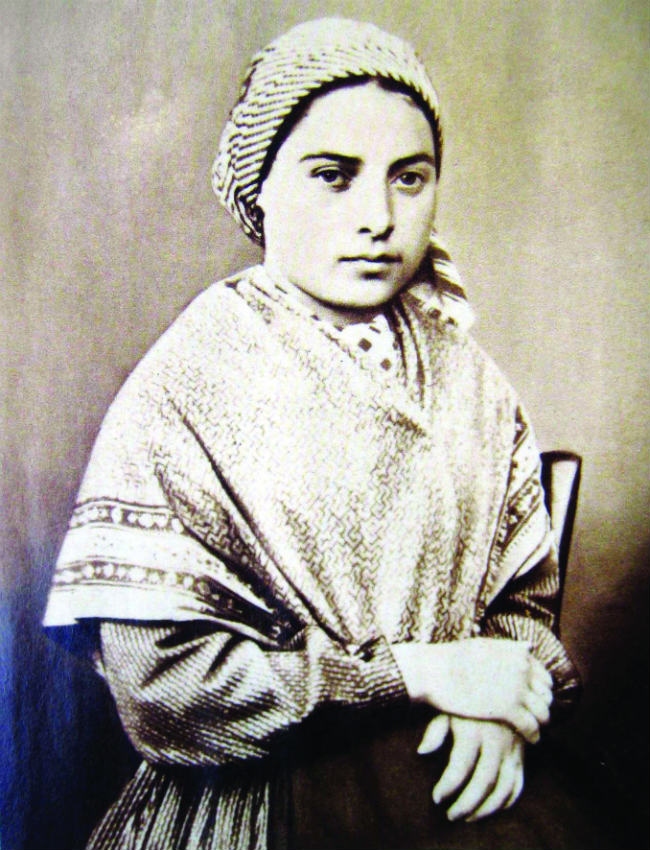
Bernadette achieved sainthood in 1933 and was enshrined at the Saint Bernadette Chapel on the grounds of Saint Gildard.

Her body is still on display in the Chapel of St. Bernadette in Nevers, France



The statue of the Immaculate Conception that currently stands in the niche within the grotto of Massabielle was created by the Lyonnais sculptor Joseph-Hugues Fabisch in 1864.

The Song of Bernadette
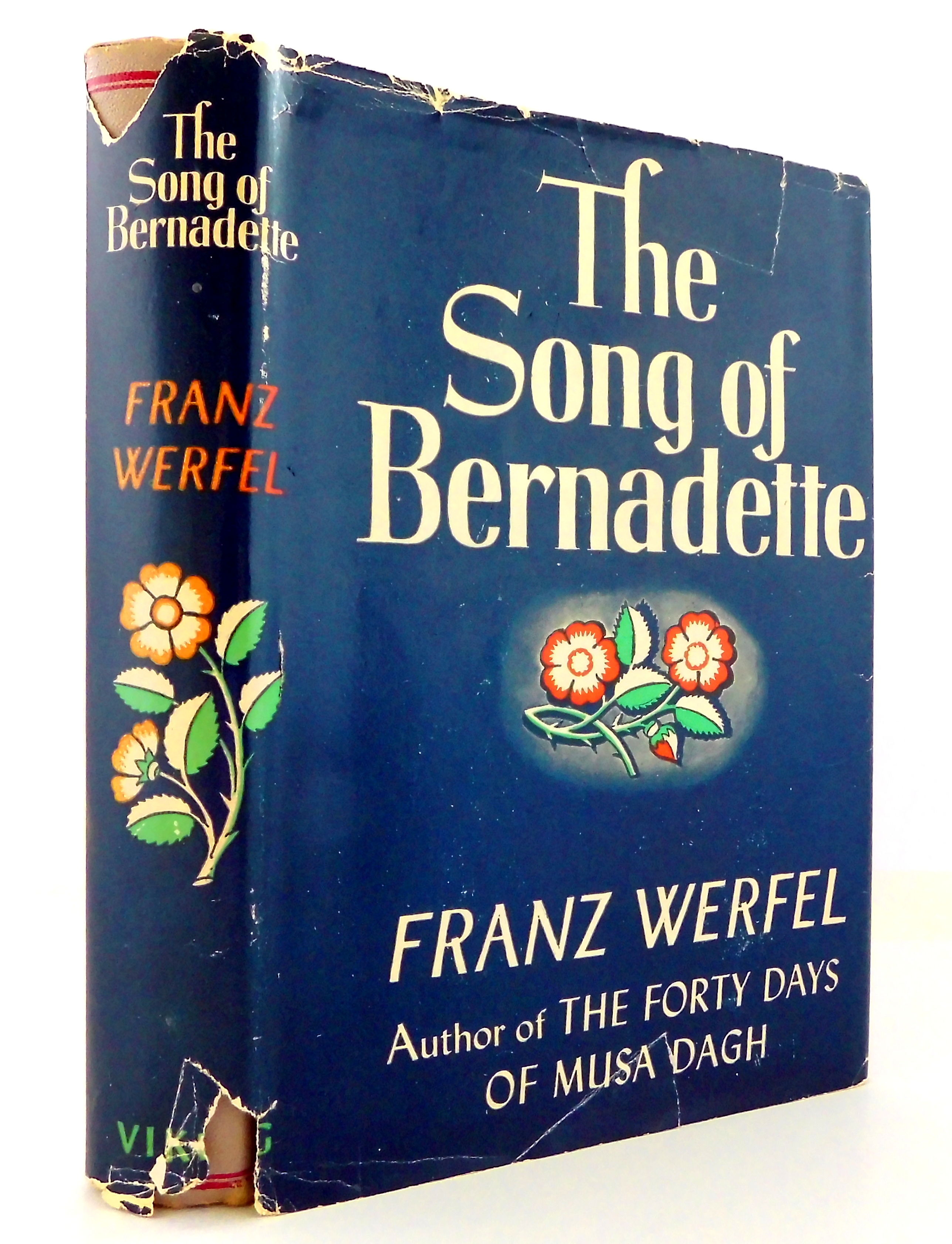
“The popularity of Saint Bernadette was likely due to Franz Werfel’s 1941 book, The Song of Bernadette. Werfel, a German Jew, and his wife, Alma, former widow of famed composer Gustav Mahler, were sequestered in Lourdes for five days during their escape to America after France fell to the Nazis. They were hidden by local families who shared the story of the Saint’s visions and subsequent miracles. Werfel vowed that if they reached America, he would write the story, which was subsequently made into the film starring Jennifer Jones.”

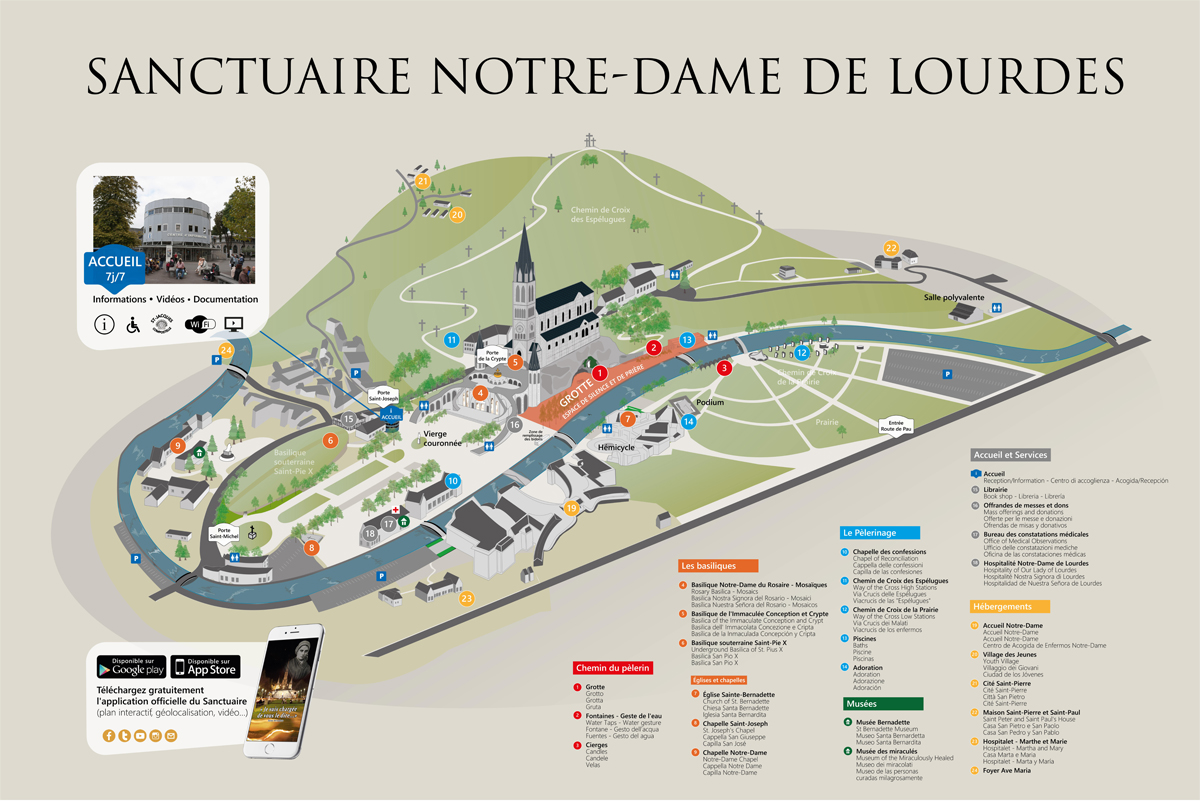
I never miss an opportunity to visit a Christian Pilgrimage Site or UNESCO World Heritage Site in Europe; it’s an integral part of my Wine Tourism experiences.
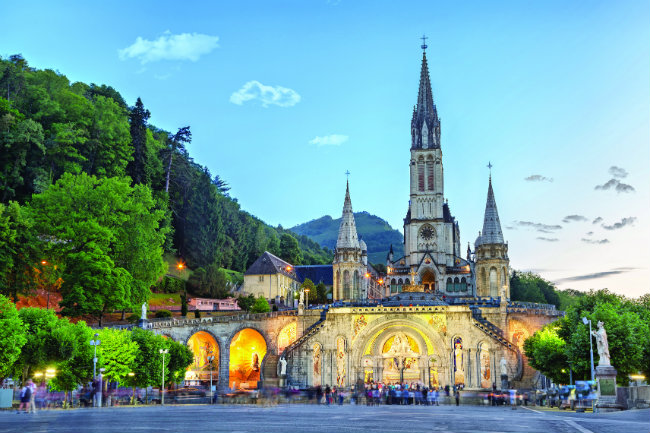
The closest wineries to Lourdes are in the Jurançon appellation; a wine region in Southwest France in the foothills of the Pyrenees, where you can take The Jurançon Wine Route. The region produces a dry white wine and a more sought after sweet white wine. If Madiran is the king of red wines in the Pyrénées, then Jurançon is the king of whites.
In the Pyrénées appellations, Jurançon has the most rare and unique grapes, seldom seen elsewhere. Petit Manseng makes up 40% of the plantings and is a grape capable of developing high sugar levels without losing its crisp, refreshing acidity. Petit Manseng can either be picked earlier for dry wines or later for sweet wines. Gros Manseng makes up 55% of the region’s plantings; its leaves are larger than those of Petit Manseng,
 The grape varieties used are Gros Manseng, Petit Manseng and Courbu.
The grape varieties used are Gros Manseng, Petit Manseng and Courbu.
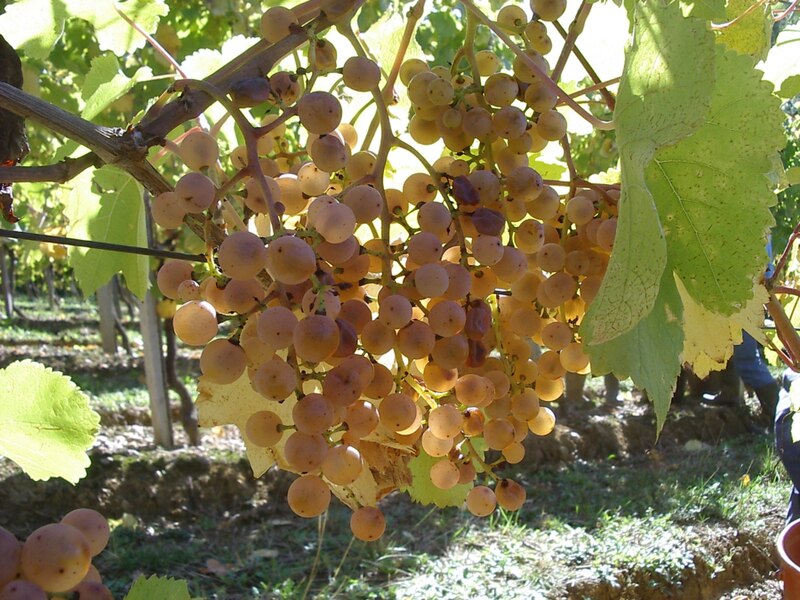
Clusters of small manseng grapes above.
The Jurançon vine was introduced over 2000 years ago by the Romans.



Domains, on the Jurançon Wine Route are in the Bearn subregion:
are in the Bearn subregion:
Sweet Gros Manseng is a sweet white wines from the Gros Manseng varietal famous in the Jurançon area
Gros Manseng is harvested late in the season, when the level of sugar is high. This varietal produces intensely flavored wines.
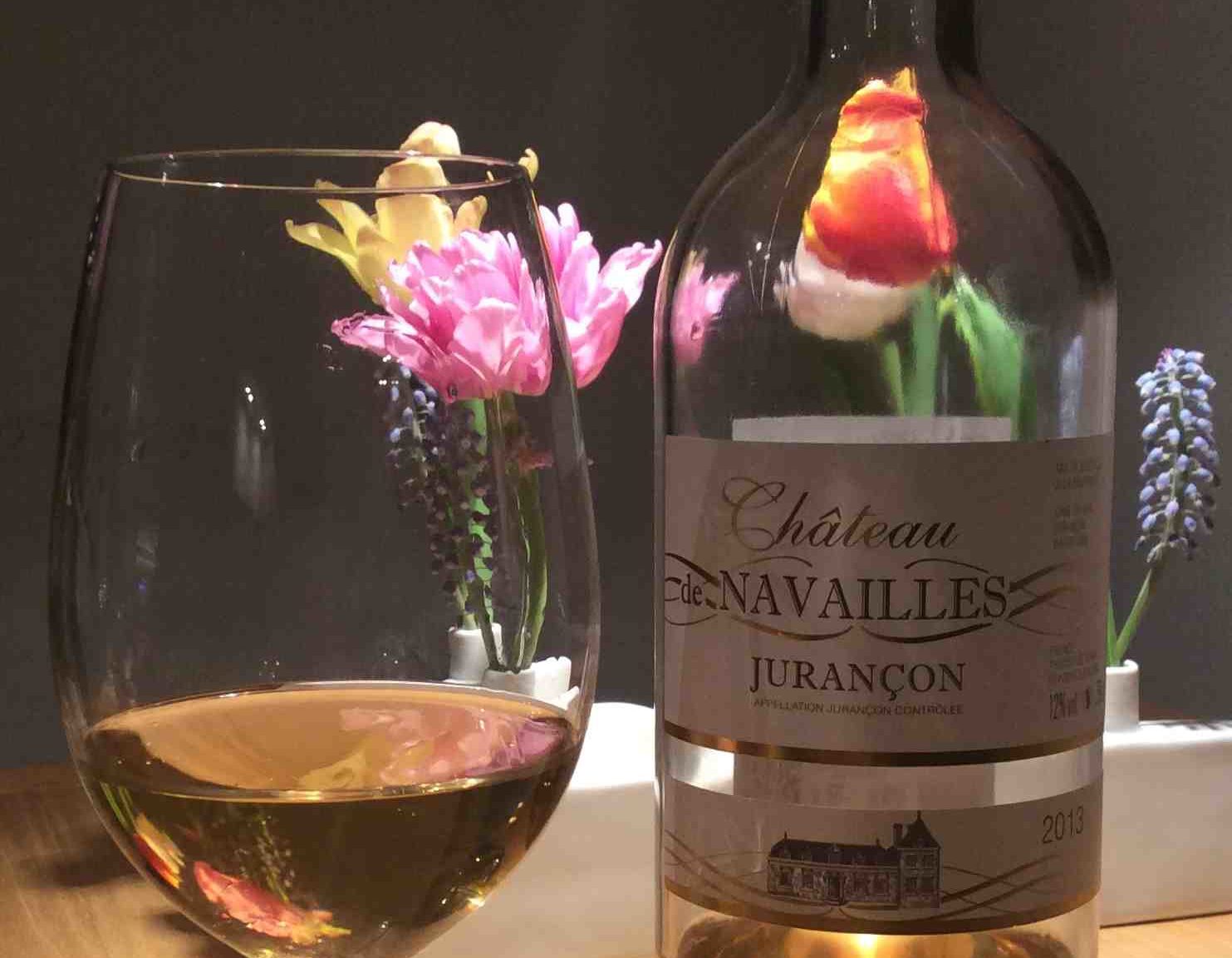

Jurançon appellation are above
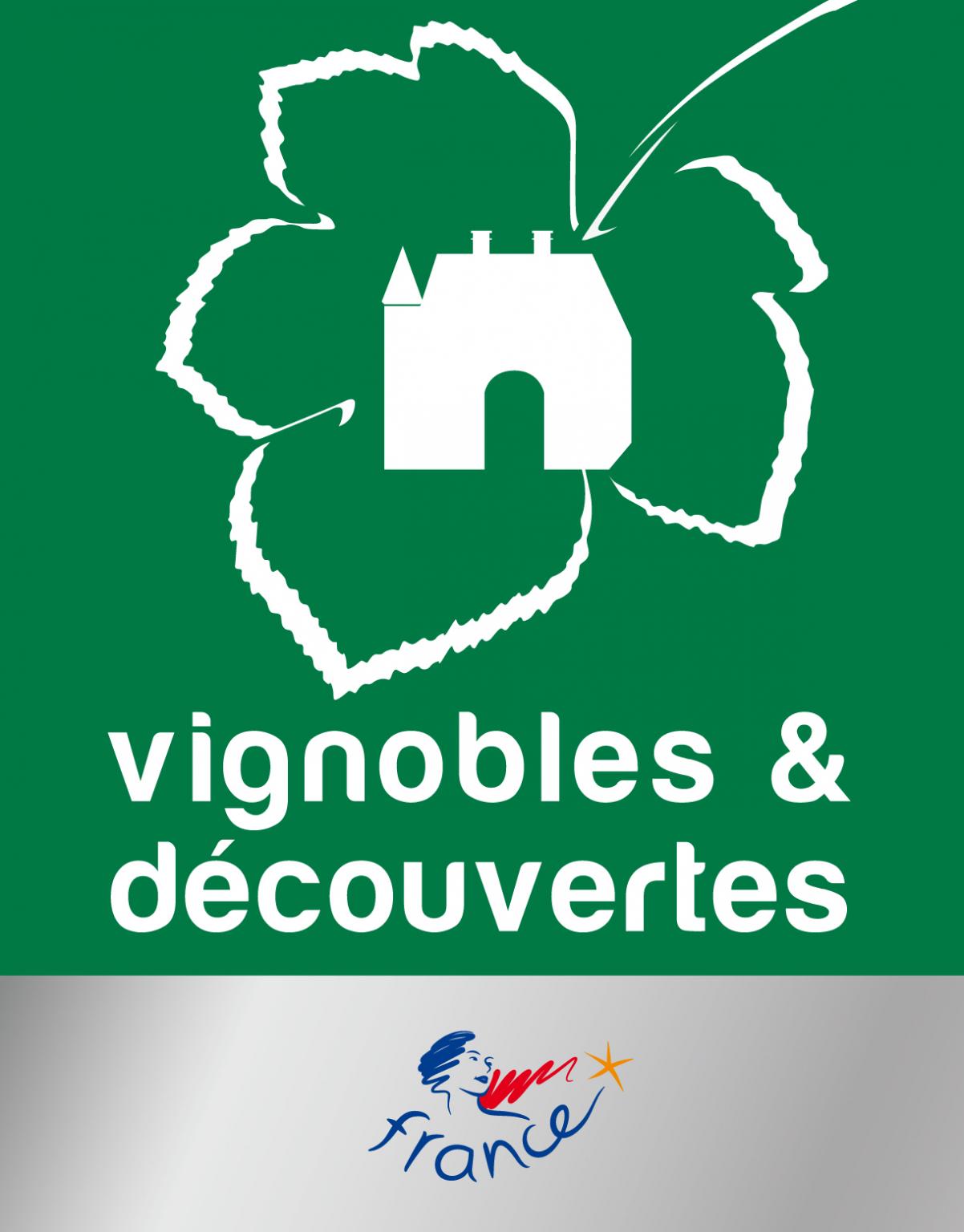
Created in 2009, the Vignobles & Découvertes label is awarded for a period of 3 years by Atout France, on the recommendation of the Superior Council of Wine Tourism, to a tourist and wine-producing destination offering a range of multiple and complementary tourist products (accommodation , catering, cellar visit and tasting, museum, event, etc.) and allowing the customer to facilitate the organization of their stay and guide them on qualified services.

In the 15th century, the largest estates were in the hands of the nobles and the Viscounts of Béarn settled in Pau in 1460.
The major dates of Jurançon
988: 1st listed transaction of Jurançon wines at Saint-Vincent abbey in Lucq-de-Béarn
1538: arrival of the terms “Mansenc” and purchase of a vineyard in Jurançon by Henri d’Albret (Henri II de Navarre)
1553: baptism of Henri IV with garlic and Jurancon 1555/1557: expansion of Jurançon on the hillsides of Gan, Jurançon and Saint-Faust
End of the 19th century: disappearance of part of the vineyard affected by vine diseases (phylloxera in particular). Loss of wine quality in the
20th century: renaissance of Jurançon and return to tradition
1936: Jurançon becomes one of the 1st Designations of Origin
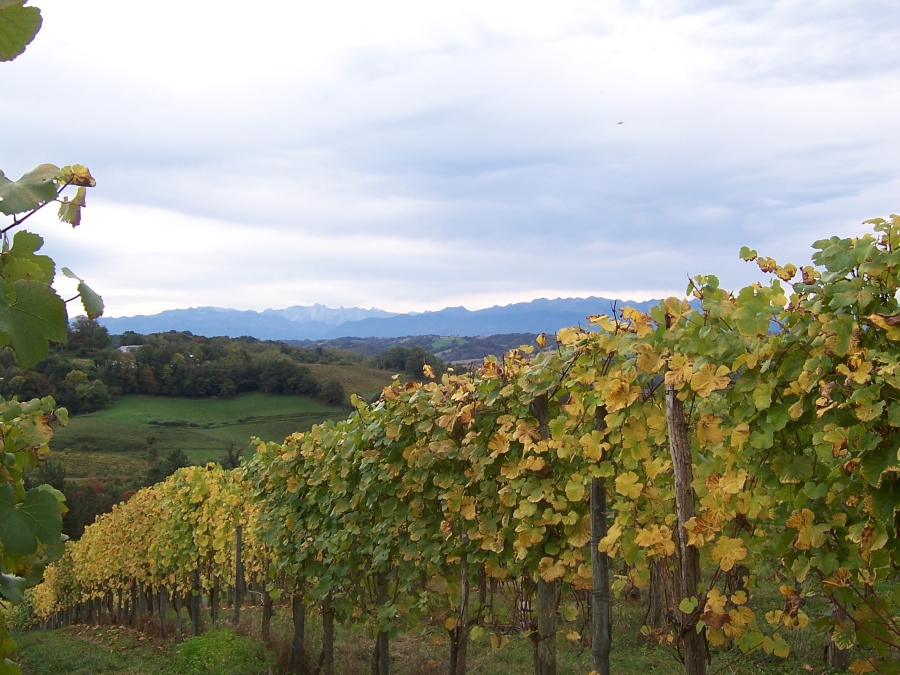
Lourdes is in Gascony near Tarbes on this map. It is part of the Hautes-Pyrénées department in the Occitanie region in south-western France. To the south of Tarbes, along with the pilgrimage town of Lourdes, is the border with Spain. The Pyrenees mountains, lying along the border between France and Spain, can be seen from here.
Irouléguy Vineyards

The French side of the Basque country has one wine appellation, Irouléguy, tucked within the valley that runs between St-Jean-Pied-de-Port and St-Étienne de Baïgorry, about 50 kilometers from the ocean. The bulk of production in Irouléguy is red. This area is famous for its dried Bayonne ham, brebis sheep’s milk cheese and piment d’espelette, a spicy powder made from ground small red peppers.

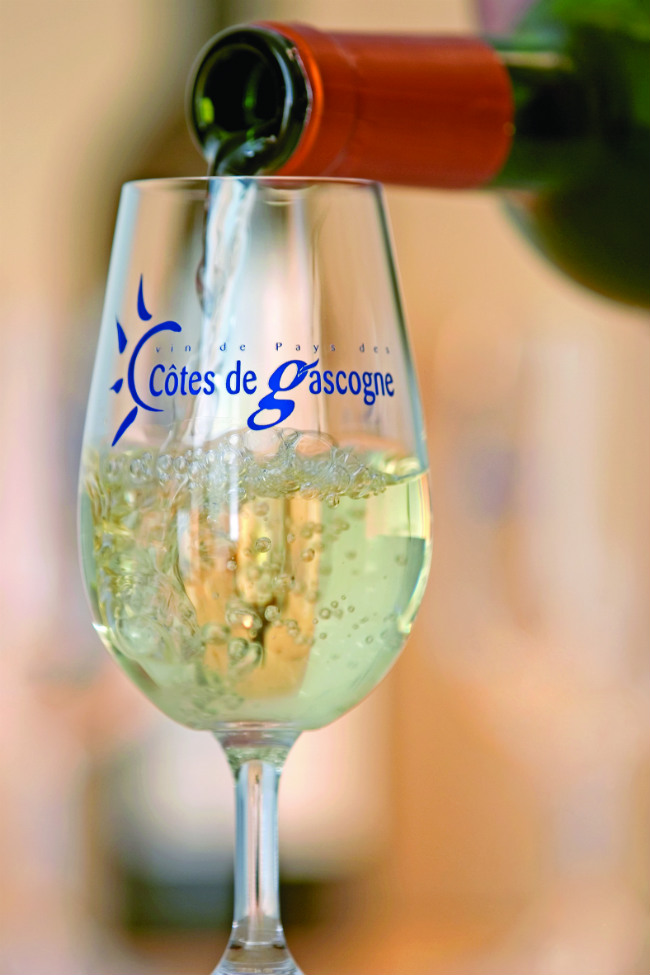
Gascony subregions of Wine

The Côtes de Gascogne wine-making zone is found in the Gers Department of France sometimes called The French Tuscany.
 The Côtes de Gascogne This wine appellation is just west of Toulouse and northeast of Juracon. It shares some of the same area of production as Armagnac, France’s oldest brandy.
The Côtes de Gascogne This wine appellation is just west of Toulouse and northeast of Juracon. It shares some of the same area of production as Armagnac, France’s oldest brandy.
Main white grape varieties: Sauvignon, Colombard, Gros Manseng, Ugni Blanc, Chardonnay
Main red grape varieties: Merlot, Cabernet Sauvignon, Cabernet Franc, Tannat


Béarn, most have heard of Sauce Béarnais, which originates in the region. Made with clarified butter, egg yolks, white wine vinegar, shallots, chervil, peppercorns and tarragon, it’s a classic accompaniment to steak frites.

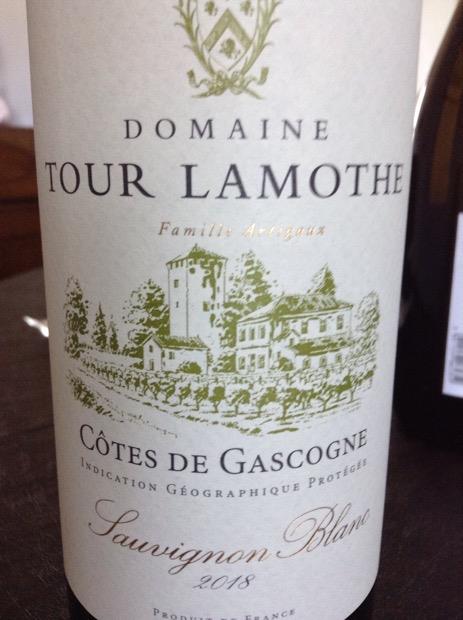
The historic name for this region is Gascony, and it has been home to viticulture since Roman times. Gascony is the land of d’Artagnan, who inspired Alexandre Dumas‘s character d’Artagnan in The Three Musketeers, as well as the land of Cyrano de Bergerac, who inspired the play of the same name by Edmond Rostand. It is also home to Henry III of Navarre, who later became king of France as Henry IV.
I love the rolling countryside dotted with maritime pine and cypresses and stunning vineyards and medieval towns, the area is one of the least-known French treasures.


